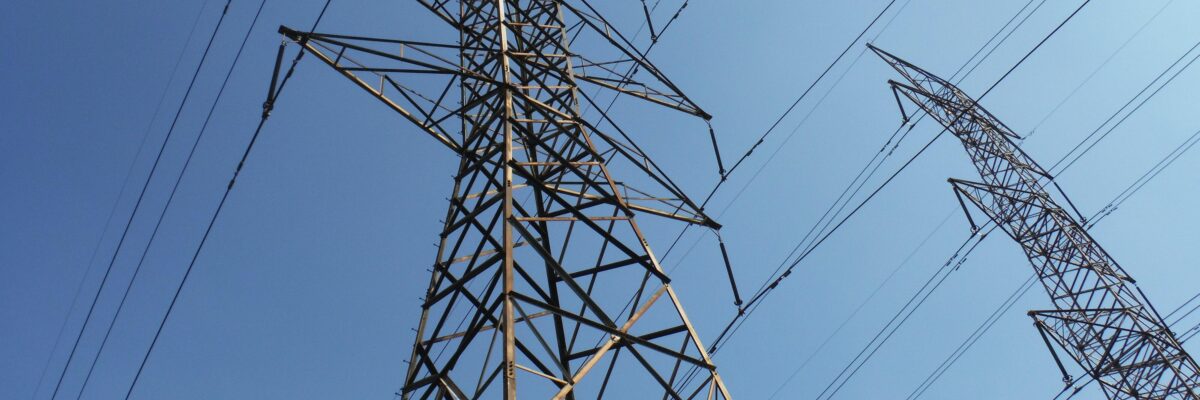
Transmission Infrastructure
State attorneys general are addressing energy infrastructure projects and needs in their states and regions, including transmission infrastructure. Transmission infrastructure is often needed to move clean energy resources (such as wind, solar and hydropower) from stranded, remote locations to load centers. See our Tracking Transmission Reform resource for the latest updates on how state attorneys general are engaging in grid reform.
Advocacy at the Federal Level
The Federal Energy Regulatory Commission (FERC) regulates incentives to build transmission infrastructure under section 219 of the Federal Power Act (FPA), enacted as part of the Energy Policy Act of 2005. FPA section 219 required FERC to establish incentive-based (including performance-based) rates for the transmission of electricity for the purpose of benefiting consumers by ensuring reliability and reducing the cost of delivered power by reducing transmission congestion.
Transmission Incentives
2021-2024
-
April 2021
On April 26 2021, the Federal Energy Regulatory Commission (FERC) issued a supplemental notice of proposed rulemaking, Electric Transmission Incentives Policy Under Section 219 of the Federal Power Act, to modify the incentive proposed for transmission and electric utilities that join Transmission Organizations.
-
June 2021
On June 25, 2021, Connecticut Attorney General William Tong led a coalition of 11 AGs in filing comments on FERC’s proposal to revise its regulation of transmission incentives, which are used to promote new transmission builds.
A final rule on “Electric Transmission Incentives Policy Under Section 219 of the Federal Power Act” was scheduled to be issued in November 2023, but has not yet been issued.
2017-2020
-
March 2020
In March 2020, FERC released a notice of proposed rulemaking (NOPR) that proposed to revise FERC’s electricity transmission incentives under section 219 of the FPA.
-
June 2020
In June 2020, attorneys general filed comments opposed to the NOPR.
Connecticut Attorney General William Tong led a coalition of seven attorneys general and other state entities in filing comments. The comments noted that based on the record of the proceeding, there is no demonstrated need to modify existing incentives except in limited instances, such as to better reflect states’ clean energy policy choices and related statutory requirements. The attorneys general continued that adoption of all other proposed rule changes would be arbitrary and capricious in violation of the Administrative Procedure Act.
Virginia Attorney General Mark Herring filed his own comments. The attorney general noted that the NOPR is neither factually nor legally supportable and pointed out that the proposal would boost utility profits at the expense of utility consumers. Further, the comments stated that the NOPR is inconsistent with section 219 of the FPA in failing to provide an incentive to induce behavioral changes that strengthen transmission infrastructure, instead seeking to force captive ratepayers to pay for business-as-usual as it relates to transmission infrastructure.
Transmission Facility Permit Siting
2021-2024
-
January 2023
In January 2023, FERC issued a notice of proposed rulemaking, Applications for Permits To Site Interstate Electric Transmission Facilities, seeking to revise its existing regulations governing applications for permits to site electric transmission facilities under section 216 of the Federal Power Act, as amended by the Infrastructure Investment and Jobs Act of 2021.
On January 5, 2023, Kentucky Attorney General Daniel Cameron filed a doc-less motion to intervene. Per the docket, there has not been any other AG engagement with this matter.
Comments were due May 17, 2023. According to the Federal Agenda, FERC anticipates issuing a final rule by May 2024.
Transmission Planning and Generator Interconnection
2021-2024
-
July 2021
On July 27 2021, FERC issued an advanced notice of proposed rulemaking (ANOPR), Building for the Future Through Electric Regional Transmission Planning and Cost Allocation and Generator Interconnection, presenting potential reforms to improve the electric regional transmission planning and cost allocation and generator interconnection processes.
-
October 2021
On October 12, 2021, a coalition of 11 AGs filed comments in response to FERC’s ANOPR on transmission planning.
-
November 2021
On November 26, 2021, Connecticut Attorney General William Tong led a coalition of 9 states in submitting reply comments in response to FERC’s “Building for the Future Through Electric Regional Transmission Planning and Cost” NOPR.
-
May 2022
On May 4 2022, FERC released the notice of proposed rulemaking (NOPR).
-
July 2022
On July 5 2022, FERC issued a NOPR, Improvements to Generator Interconnection Procedures and Agreement, proposing reforms intended to ensure that the generator interconnection process is just and reasonable and not unduly discriminatory or preferential.
-
September 2022
On September 19, 2022, Connecticut Attorney General William Tong, along with the Connecticut Department of Energy and Environmental Protection and the Connecticut Office of Consumer Counsel, led a coalition of five AGs and several other state agencies in submitting reply comments to the FERC’s “Building for the Future Through Electric Regional Transmission Planning and Cost Allocation and Generator Interconnection” NOPR.
-
October 2022
On October 19, 2022, Connecticut Attorney General William Tong, along with the Connecticut Department of Energy and Environmental Protection, and the Connecticut Office of Consumer Counsel, led a coalition which included six AGs in submitting comments on FERC’s proposal to improve electric generator interconnection procedures.
FERC was expected to take its next action in the “Building for the Future Through Electric Regional Transmission Planning and Cost Allocation and Generator Interconnection” proceeding in November 2023. However, there has not been new information issued regarding their next action. The agency’s next action in the “Improvements to Generator Interconnection Procedures and Agreements” proceeding was also expected in November 2023. Similarly, there has not been any action taken by FERC at this time.
For up-to-date AG activity on transmission reform, see our Tracking Transmission Reform web resource.
